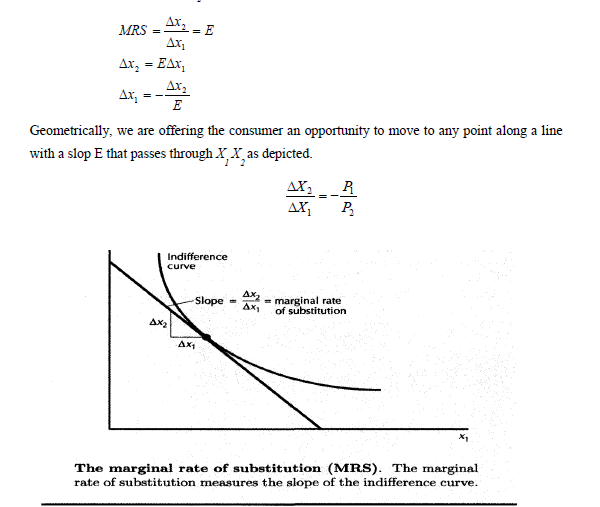Marginal rate of substitution is the rate at which a consumer gives up certain amount of one good in exchange for another good while maintaining same utility. The slope of the IC is known as the MRS. It measures the rate at which the consumer is just willing to substitute one good for another.
Suppose that we take a little of good 1; ?X
1 away from the consumer. Then we give him ? X
2 an amount i.e. just sufficient to put him back on his/her IC, so that he is just as well off after this substitution of X
2 for X
1 as he was before.
The ration ?X
2 is thought as being the rate at which the consumer is willing to ?X
1 substitute good 1 for good 2 and is called the MRS.
The MRS measures an interesting measure of consumer behavior. Suppose that the consumer has well behaved preferences, i.e. preferences which are monotonic and convex, and currently consuming some bundle (X
1 X
2). The consumer is now offered a trade: to exchange good 1 for 2 or good 2 for I in any amount at a “rate of exchange” of E. i.e. If the consumer gives up ?X
1 units of good 1, he can get E?X
1 units of good 2 in exchange or conversely, if he gives up ? X
2,units of good 2, he can get ?X
2 units of good 1.

Moving up and to the left from X
1 to X
2 involves exchange of good I for good 2,and moving down to the right involves exchanging good 2 for good 1. In either movement the exchange rate is E. Since exchange always involves giving up one good in exchange for another, the exchange rate E corresponds to slope at E. The point of tangency between the budget line and the indifference curve is referred to as the consumer equilibrium.
Montari6 answered the question on
January 6, 2019 at 18:13